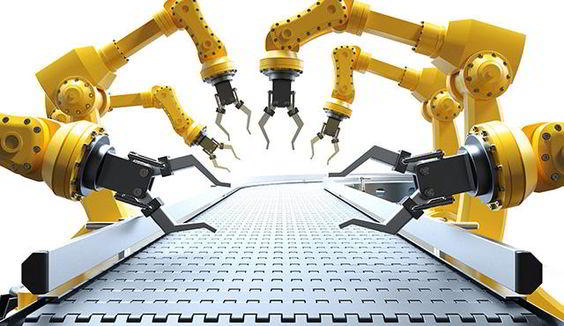If you are planning to integrate an industrial robotic system into your manufacturing line, you need to consider their advantages and disadvantages. Industrial robots provide a lot of benefits but they also have their own limitations. Before buying one for your production line, make sure that you are ready to deal with their disadvantages. Although they provide a lot of benefits, they also have their limitations.

Advantages of Industrial Robots
Below are the main reasons why manufacturing companies use industrial robots in their production lines.
#1 Prestige
Having industrial robots in your factory gives your clients the “wow” factor. They show your clients that you can keep up with the current technology trends. Robots are fantastic marketing tools that can help you boost your brand’s image.
#2 Increased Production Output
Human workers need breaks during their shifts. They have slow attention spans and can get easily distracted. Robots can operate 24 hours a day while still maintaining high efficiency. You can increase your production output once you replace human workers with robots. Although they operate for the same working hours, robots have greater stamina and can work non-stop. Moreover, robots do not take holidays or unexpected absences.
Industrial robots can also produce products with higher quality compared to human workers. This greatly reduces the time you need for quality checks because they make sure that you meet quality standards.
#3 Increased Profitability
Introducing robots into your production line can ensure higher profits with lower operating costs. You can use them to automate tasks in your manufacturing line that require a lot of resources and time before they can be completed. Difficult tasks that require many human workers to complete can be easily done by a single robot. Though they are expensive investments at first, they will help you save money in the long run.
#4 Safer Working Environment
Most of the tasks in industrial settings are laborious, repetitive, and too dangerous for human workers to do. You can use robots to complete these kinds of tasks instead. By employing robots, you can greatly improve working conditions and safety in your production plants and factories.
If you are interested in buying an industrial robot after reading the benefits they provide, you can visit this website.
Disadvantages of Industrial Robots
Now, let us proceed to the disadvantages of industrial robots that you need to take into account before deciding whether to buy one or not.
#1 Safety
Safety is one of the most important things you need to consider when you want to integrate a robotic system into your manufacturing line. Industrial robots need extra attention when it comes to safety. You have to make sure that they have safety sensors to prevent your robots from harming your human workers.
You also need to perform risk assessments if the manufacturer of the machine did not do any tests. The machine needs to be assessed completely and should have a CE marking. Although there are some robots (collaborative robots for instance) that are considered safer, they still need to undergo a full assessment of risks. Through this assessment, you can evaluate the machine’s speed and nip points as well as the potential risks related to its end of arm tooling.
#2 Limitations
Industrial robots can only perform specific tasks, so it is advisable to consult automation companies before you go buying an industrial robot. These companies can help you assess your options first.
There are times that automated systems may provide faster or better results compared to robots. Robots are not equipped with everything you need for your application. The success of a robotic system will depend on how other systems are incorporated into the machine. These include conveyor systems, vision systems, and grippers.
#3 Expertise
Setting up an industrial robotic system for the first time requires significant expertise and training like other types of technology. Find an automation company that can provide you with support packages. This is a very important factor when you are finding a robot manufacturer you can partner with.
You can minimize your reliance on robot automation companies by training your own engineers so that they can program the robots themselves. However, the initial robot integration still requires the help of skilled automation companies.
#4 Capital Cost
Investing in industrial robots requires a lot of money. But, they can ensure a positive return on investment in the long run. So, before you make decisions about integrating a robotic system into your manufacturing plant, consider the initial investment required along with your expected ROI.
Conclusion
Advice from experts and careful consideration is needed before you invest in robotic systems. This blog aims to provide you insights into the things you need to consider before integrating industrial robots into your production lines. Like other machines in the industrial sector, robots have their own pros and cons which you need to weigh carefully. We hope that this short blog was able to give you a general idea about industrial robots.